Kapil Komireddi is the author of Malevolent Republic: A Short History of the New India.
Indian elections are a marvel to behold. Consider the administrative dexterity required to conduct a plebiscitary exercise in which 2,660 registered political parties and 969 million voters – more than the entire population of the continent of Europe – are eligible to participate.
The Election Commission of India manages this gargantuan challenge by staggering the vote. This year, the polls will be held in seven phases, beginning on April 19 and concluding on June 1, with more than 15 million personnel conscripted to oversee them. The rules insist that no citizen should have to travel more than two kilometres to vote, and so agents of the state will go to the voters. At the last election, in 2019, officials equipped with oxygen tanks scaled the Himalayas to erect a voting booth in a small village 4,500 metres above sea level. In eastern India, polling officers trekked all day to reach the sole registered voter – an elderly woman – living in a remote village. In western India, a voting booth was set up for the lone human inhabitant of a wildlife sanctuary.
The strains embedded in this protracted process, and the scrupulousness with which they are overcome, can suggest impeccable democratic health. Nothing could be falser. Indian democracy, originating as an audacious experiment in enfranchising people and making government accountable to voters, has never been sicker.
Narendra Modi, whose Hindu-first Bharatiya Janata Party (BJP) came to power in 2014, has presided over the most total social and political transformation of the world’s largest democracy since the economic liberalization of the early 1990s.
Founded as a secular republic, India now functions as a de facto Hindu state. Delhi, which used to preach neutrality and non-interventionism abroad, is now deluged by credible allegations of staging assassinations on foreign soil, including in Canada. Decades of tributes to socialism have culminated, on Mr. Modi’s watch, in the creation of an oligarchic paradise in which a handful of favoured plutocrats predominate in the economy. The institutions devised to safeguard democracy, having collapsed under the burden of Mr. Modi’s strongman rule, are proving ineffectual as he attacks opponents directly. And India is now the site of the most formidable cult of personality in the democratic world, with Mr. Modi’s face and name emblazoned everywhere.
The opposition is sounding an existential warning: This could be the last chance to save Indian democracy.
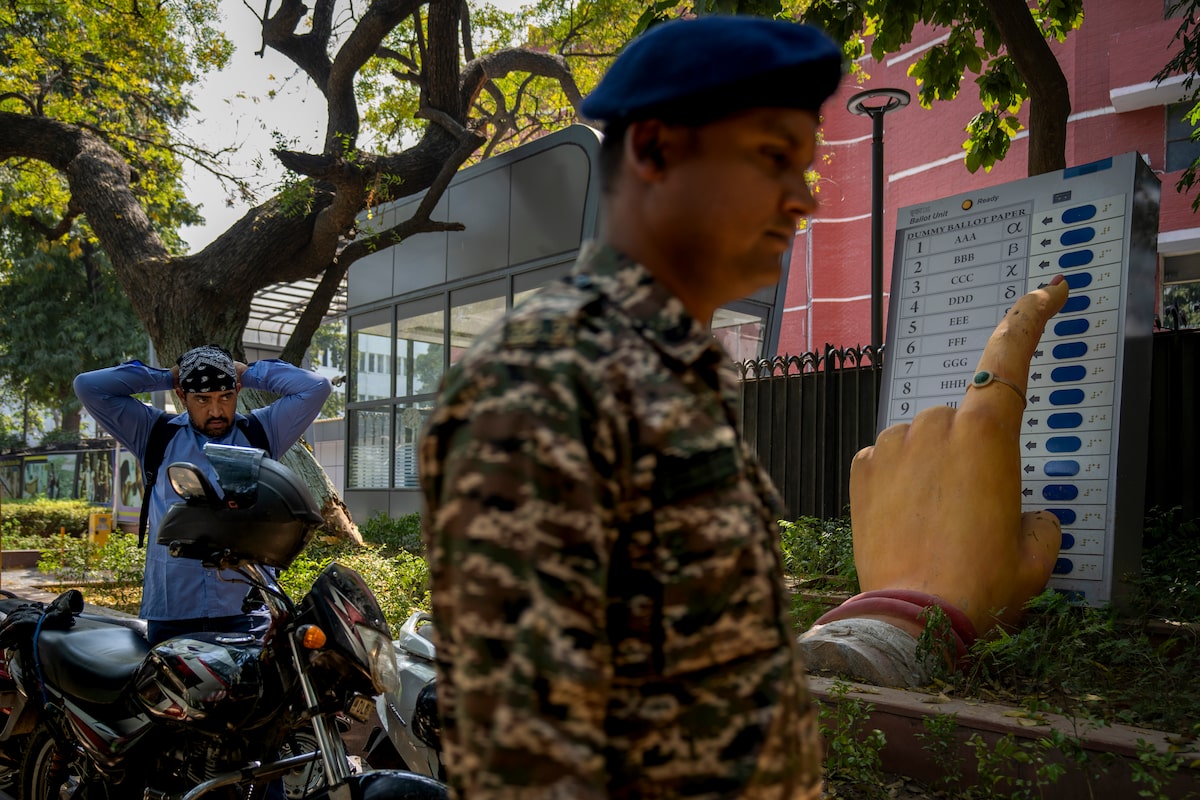
Seventy-seven years after its founding, a country that was once routinely held up as a model for aspiring democrats in the postcolonial world looks increasingly like a cautionary tale for established democracies everywhere – and for government opponents in India itself.
To be an able challenger to Mr. Modi is to more than court trouble; it is to invite persecution. Take, for instance, Arvind Kejriwal, the chief minister of Delhi. Mr. Kejriwal has led the Aam Aadmi Party, founded just over a decade ago, to power in two states – an unprecedented achievement – and was expanding his party’s footprint and emerging as a competent rival to Mr. Modi. But on March 21, he was arrested by the Enforcement Directorate (ED) – the domestic economic crime-fighting agency that has been transformed by Mr. Modi into his own Praetorian Guard – on allegations of kickbacks and corruption arising from a liquor-sales policy that was scrapped last year.
The courts are powerless in the matter. They are bound by a law against money laundering that was broadened in 2019 to grant powers of arrest to the ED without a court warrant, and to enjoin the judiciary from giving bail to suspects until it is convinced of their innocence. Mr. Kejriwal – who is now in indefinite detention with his deputy, Manish Sisodia, who has been there for more than a year – is therefore presumed guilty by the provisions of the law; he has to prove his innocence before he can re-enter public life. And so, in the weeks leading up to the most consequential election in India’s republican history, the Prime Minister’s most charismatic opponent is locked up.
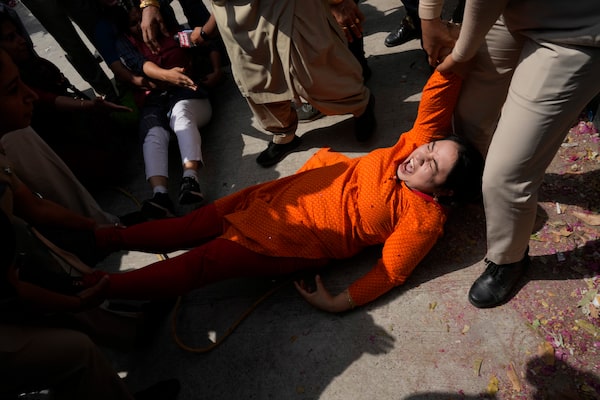
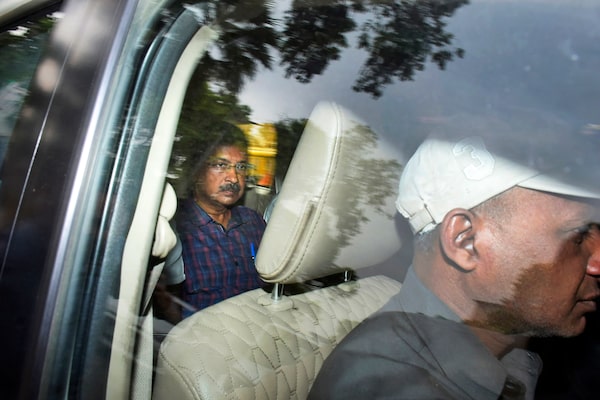
At top, police arrest an Aam Aadmi Party supporter in Delhi on March 26; two days later, party leader Arvind Kejriwal leaves a court hearing that ordered him into judicial custody.Manish Swarup and Dinesh Joshi/AP
What is striking about this act of tyranny is its superfluity. Mr. Modi doesn’t need to silence his political antagonists because he is the most popular politician in India. Donald Trump infamously joked that he could shoot someone on the street and still not lose voters; Mr. Modi is that jest come to life. In the past decade, he has dragged the country from one avoidable crisis into another – and gallingly, for all who still believe in the ideal of India, he doesn’t have a political bruise to show for all the devastation caused by his own malevolence and incompetence.
One of the most significant disasters came in November, 2016, when Mr. Modi announced a summary ban on all 500 and 1,000-rupee notes, rendering almost 17 trillion rupees ($279-billion today) in circulation worthless with just a few hours’ notice. The Prime Minister justified his radical action as a bitter but necessary remedy for the sweeping affliction of “black money”: wealth amassed through illegal means. He even adduced a national-security rationale, claiming that terminating the notes would invalidate the vast amounts of counterfeit currency allegedly being channelled into the Indian economy by sponsors of terrorism operating from Pakistan.
Yet no Pakistani could have engineered the wave of misery that washed over India almost instantly. Mr. Modi’s surprise note ban, unlike any war or calamity in living memory, exposed people in every corner of India to intense distress. With an estimated 86 per cent of India’s currency suddenly being removed from circulation, farmers in rural India couldn’t sell their produce and patients were unable to pay for medicine. People who had moved from India’s decaying countryside to make a living in its burgeoning cities – as servants, cooks, cleaners, chauffeurs and construction workers – could not feed themselves or send money to the families they had left behind because they did not have bank accounts and were in no position to “whiten” their abruptly “black” earnings.
Rather than repent or accept the failure of his policy and reverse course, Mr. Modi spent the following weeks moving the goalposts. The note ban, Indians were later told, was never really about eradicating illicit money; it was about making India a “cashless” society. Mimicking Mao Zedong’s exhortation to the Chinese to make the Great Leap Forward, Mr. Modi began urging his compatriots to “go digital”; without a hint of irony, a loyal member of his cabinet branded the entire exercise India’s own “cultural revolution.” In a country where approximately 90 per cent of all transactions then involved cash, the consequences of Mr. Modi’s move were catastrophic for many, prompting mass job losses and sagging growth rates. It took two years for India to begin to recover from his debacle.
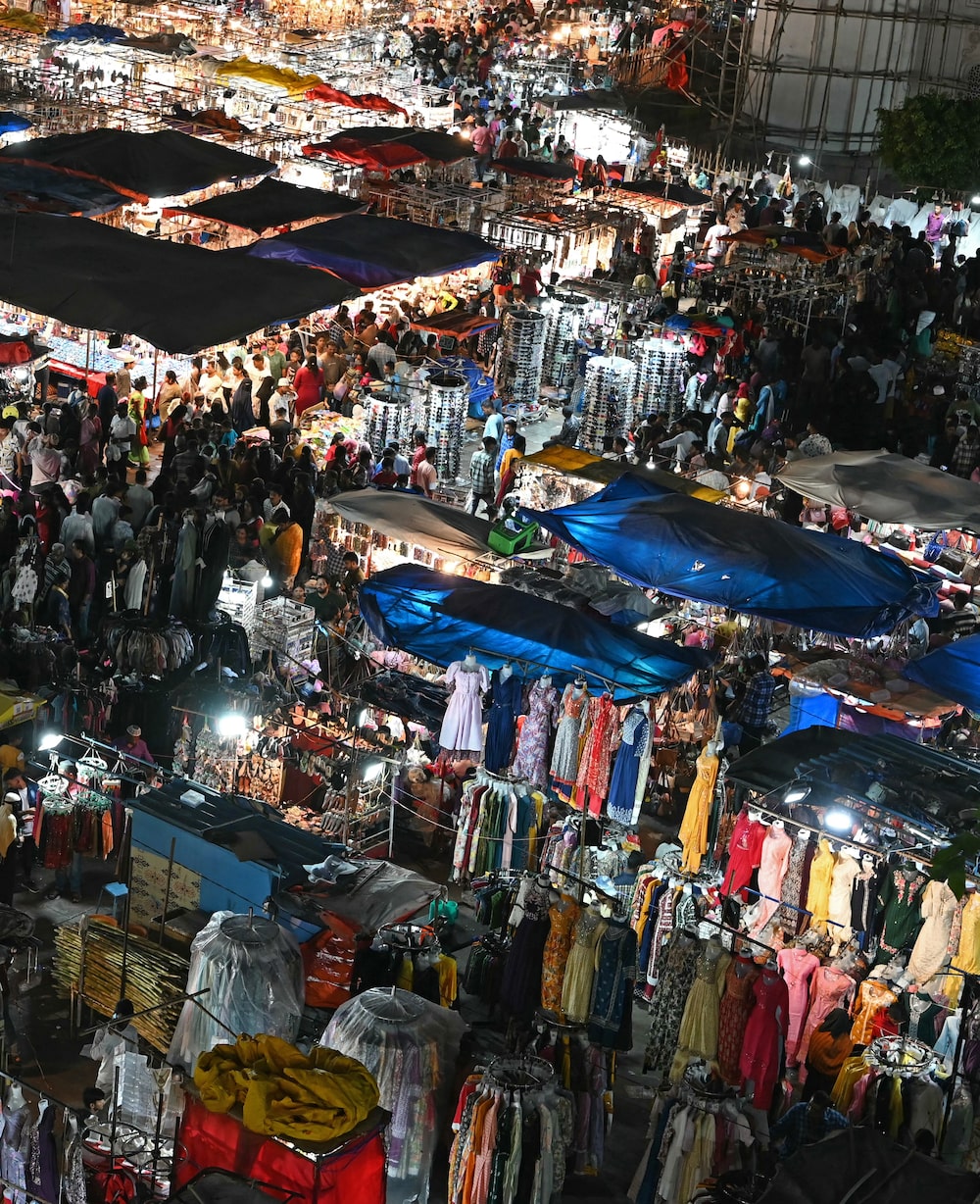
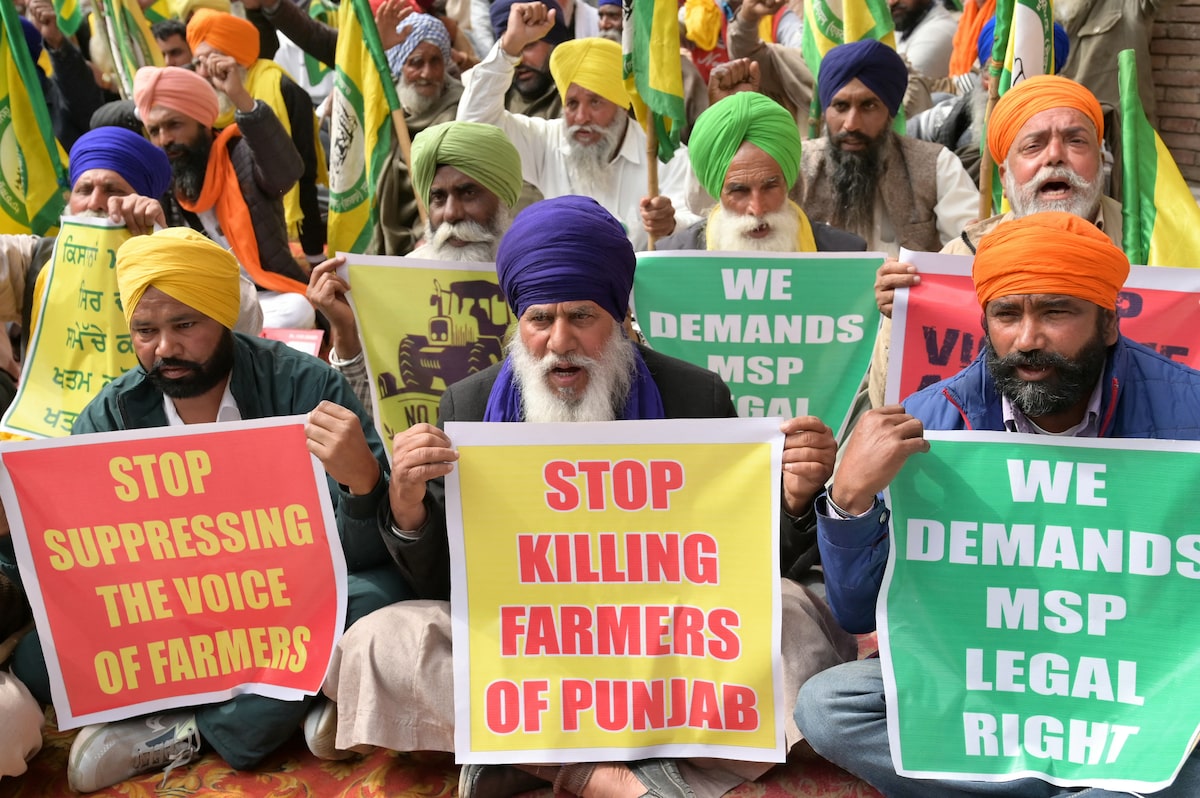
Half a decade after withdrawing these bank notes, Mr. Modi declared victory against the COVID-19 pandemic. In January, 2021, addressing a virtual summit of the World Economic Forum, he sought applause for saving “humanity from a big disaster by containing corona effectively.” After that Davos speech, his government continued to go out of its way to lull Indians into the suicidal belief that the worst was behind them. In February, Mr. Modi’s BJP passed a florid resolution praising his “leadership for introducing India to the world as a proud and victorious nation in the fight against COVID-19″: “It can be said with pride,” the resolution stated, that India “defeated COVID-19 under the able, sensitive, committed, and visionary leadership of Prime Minister Narendra Modi.” And in early March of that year, India’s health minister announced that the country was “in the end game” of the pandemic.
What then unfolded in India during the second wave of the pandemic in the spring of 2021 was more than a crisis triggered by a pathogen. It was carnage precipitated by the conduct of a self-enamoured leader. In March, thousands of unmasked cricket fans poured into a stadium in Gujarat named after Mr. Modi to watch matches between India and England. Many thousands more were bused to crowded political rallies for elections in four states in eastern and southern India. The Kumbh Mela – the world’s largest religious gathering, which ordinarily convenes every 12 years – was allowed to be brought forward by a year in deference to Hindu priests, who decreed that 2021 was an auspicious year for it. On a single day in mid-April, more than three million pilgrims took a communal dip in the Ganges River in the holy city of Haridwar.
A Naga Sadhu, or holy man, masks up in Haridwar in 2021 before a procession into the Ganges.Danish Siddiqui/Reuters
Just a little over two weeks later, India became the epicentre of the pandemic, and the first country to report more than 400,000 new cases in a 24-hour period. In New Delhi, patients suffocated to death; the most advanced hospitals were reduced to begging the government for emergency supplies of oxygen; crematoriums – blazing non-stop – ran out of room and wood. Some had to bury their dead in their gardens. Others cremated them on makeshift pyres erected on pavement. And yet, as India’s reported daily new infections surged, Mr. Modi bragged to a swarm of supporters in West Bengal in mid-April that he had “never seen such crowds at a rally.”
The pandemic, as far as Mr. Modi was concerned, was over. Just as he had feted Donald Trump a month before the first wave of the virus swamped India in March, 2020, Mr. Modi was eagerly preparing to host Boris Johnson, Britain’s then-prime minister, for a summit in the spring of 2021. But Mr. Johnson’s decision to cancel his tour in response to the rising infections in India jolted his Indian counterpart. Denying reality was no longer feasible. But by the time he acknowledged what was happening, it was too late.
Mr. Modi had claimed, in January, 2021, to have equipped India with “COVID-specific infrastructure.” But where was that infrastructure as Indians began perishing in record numbers? The man who had seduced voters in 2014 with promises of “smart cities” had once again hoodwinked the country with a rhetorical Potemkin village: Behind the façade, there was only desolation and death.
India might have been spared the humanitarian crisis had Mr. Modi not neglected his duties and vilified those who had offered him constructive counsel. He had the time, means and access to expertise to prepare the country. Months before the bodies began piling up, a parliamentary committee had issued warnings of a looming second wave and urged the government to stockpile oxygen. Rather than bolstering India’s capacities, however, Mr. Modi used the virus to burnish his cult.
A man in New Delhi waits to refill oxygen cylinders in the spring of 2021, when a second wave of COVID-19 depleted supplies of medical oxygen nationwide.Adnan Abidi/Reuters
When the coronavirus first marched into India in 2020, Mr. Modi solicited tax-free donations for a fund to help, as he put it, “the poorest of the poor” – and brazenly christened it with the acronym “PM CARES.” The Indian public deposited nearly a billion dollars into it in its first week. Staff at government departments were “encouraged” by circulars to devote a portion of their salary to the fund. Private corporations poured tens of millions into it, even as they withheld salaries from their low-wage workers; after diverting almost half a million dollars into PM CARES, the startup Cure.fit sacked 800 workers. But nobody knows exactly what Mr. Modi did with all that money, and nobody is allowed to know. Despite offering tax subsidies to contributors and using government organs to promote the fund, PM CARES cannot be reviewed by the state auditor, because it is structured as a private trust.
COVID-19, then, became an alibi for the formalization of the squalid social arrangement that has always flourished under the surface in India. Mr. Modi’s myrmidons began discovering helpful ways to deploy the appeal to the “poorest of the poor” as the national lockdown intensified. In Bangalore, the BJP government in Karnataka state halted emergency train services to prevent construction workers from going home, a cruelty explained away by one of Mr. Modi’s MPs as a “bold and necessary move” designed to “help migrant labourers.” The state government, lobbied by construction barons, had intended to put the absconding labourers to work on building sites. The ensuing public outcry prompted the government to let them go, but despite claims that it was eager to “help migrant labourers” – some of the poorest people not only in India, but the world – it could not bring itself to pay for their train tickets home. In a grotesque irony, the publicly owned Indian Railways, which insisted on collecting full fare from workers, had days before given the equivalent of more than $24-million to PM CARES.
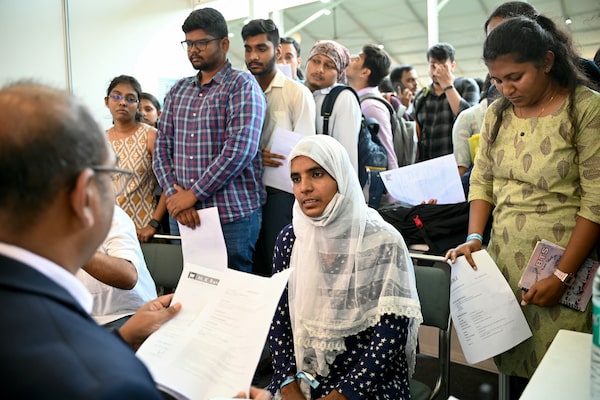
Young Indians, like these ones interviewing at a job fair in Bangalore, have continued to see high unemployment rates under Mr. Modi's watch.IDREES MOHAMMED/AFP via Getty Images
Broken pledges don’t appear to have damaged Mr. Modi’s reputation, either. He first came to power in 2014 by enticing young voters with promises to create abundant jobs and repatriate stolen Indian money stashed in the vaults of Swiss banks; a decade later, India’s youth make up 83 per cent of the unemployed work force. Corruption, meanwhile, has been legalized in ways that would have boggled the mind even of the late Robert Mugabe. From 2017 until the Supreme Court of India declared the scheme unconstitutional in February, political parties in India were funded via a BJP-created instrument called “anonymous electoral bonds,” which allowed anyone to make anonymous donations to political parties by purchasing bonds from branches of the State Bank of India. The political party redeeming the bonds would be able to identify their purchaser; everything else was shrouded in secrecy. The public had no means of knowing who gave whom what. Mr. Modi sold this arrangement as the most transparent way of funding political parties.
When the Supreme Court finally voided this form of donation and demanded all names to be made public – suggesting that it could lead to “quid pro quo” arrangements between donors and political parties – the State Bank of India petitioned the court for more time to disclose the identities of donors (conveniently, until just after this year’s elections). That effort failed, and the bank was severely rebuked and forced to reveal its records by the court in a rare instance of institutional pushback. That Mr. Modi’s BJP was revealed to have received billions of rupees – more than half of all the donations – is not surprising; what catches the breath is the fact that many corporate donors had been investigated by government agencies such as the ED, and that at least 33 companies that bought the anonymous electoral bonds had been loss-making entities in aggregate for at least seven years.
A knock on the door by the ED, followed by a donation at the bank: This, apparently, has been part of how political financing has worked in India for years now, and to the advantage of its most powerful party.
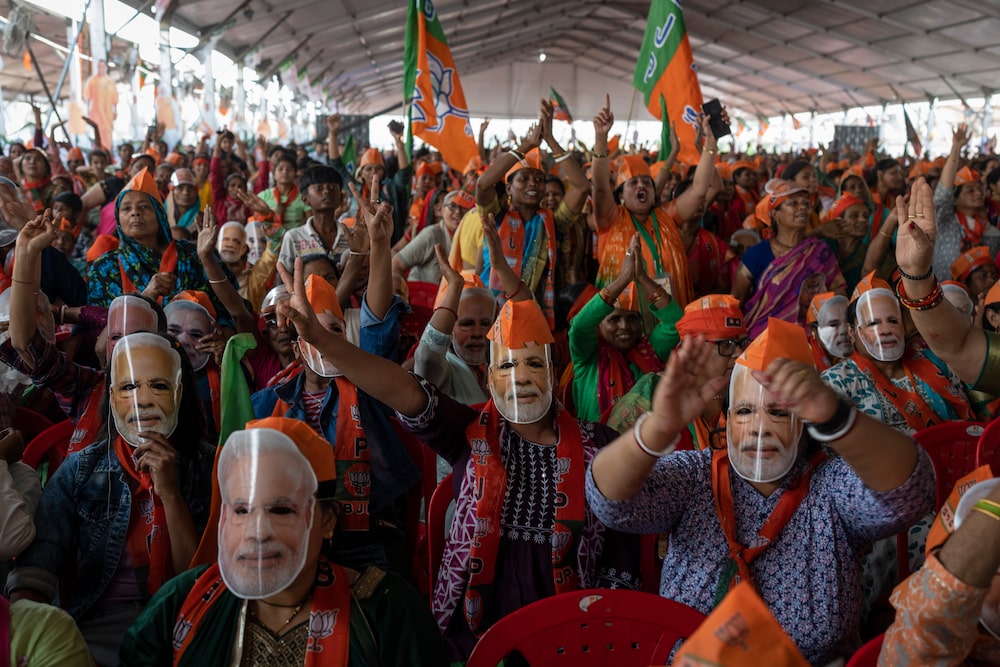
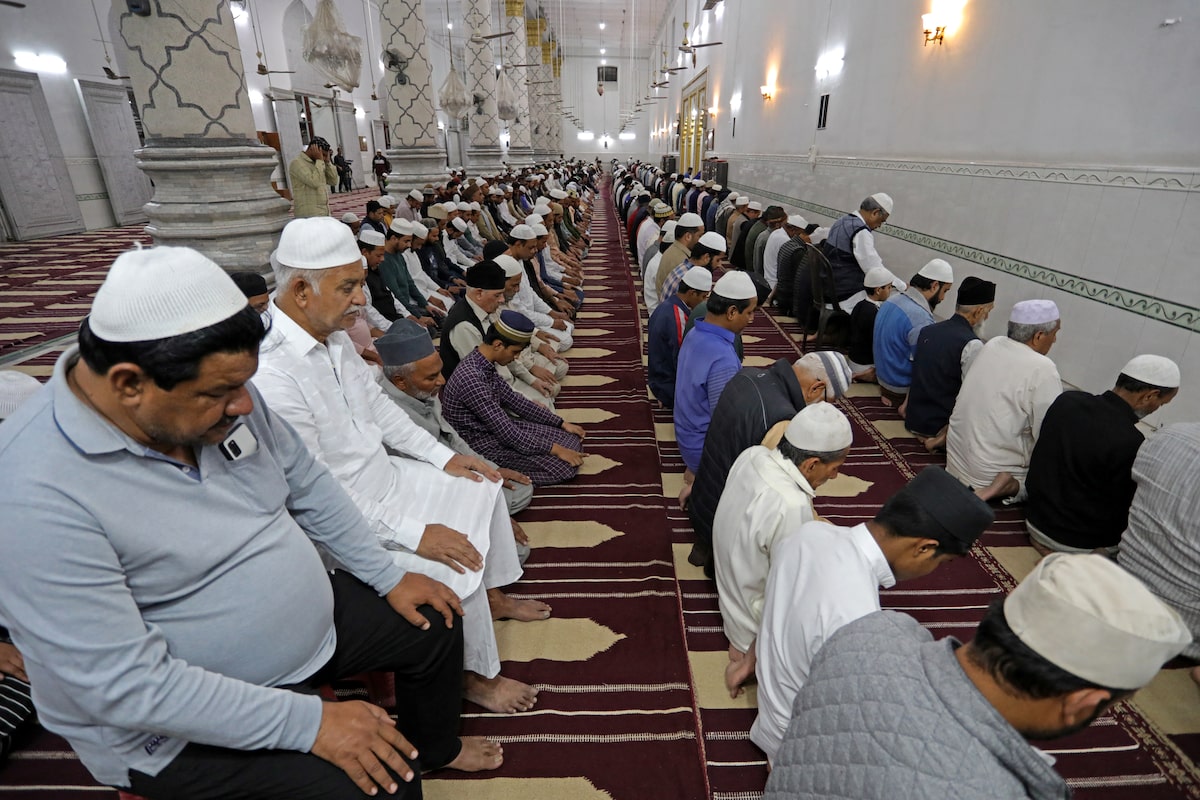
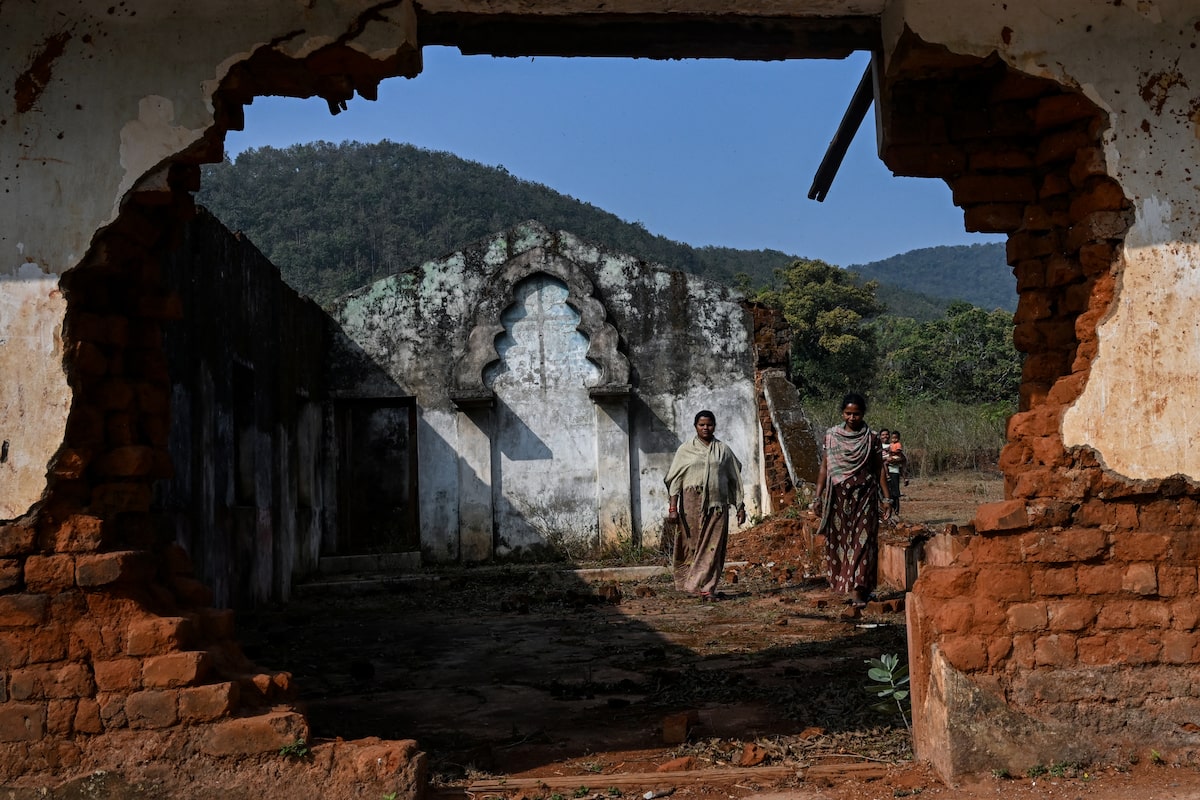
So why, despite all the damage he has wrought, is the Prime Minister still so venerated by a substantial section of the Indian electorate?
Writing about Algerian independence in the 1950s, Raymond Aron called it a “denial of the experience of our century to suppose that men will sacrifice their passions to their interests.” Mr. Modi, unable meaningfully to enhance the lives of the people who have elected him, has meticulously incited and fed their passions. Millions of voters who elected him will age without knowing an improvement in their standard of living. The rage accumulating in their hearts needs a target.
And with sectarian prejudice always humming beneath the surface in India, the room for giving it homicidal expression, aimed in particular at Muslims – who make up 14 per cent of the population – has expanded exponentially under Mr. Modi. In the world’s largest secular democracy, Muslims have been lynched by Hindu-supremacist mobs over the past decade for such offences as eating or possessing beef, dating Hindus, and refusing to give up their seats for Hindu commuters on crowded trains. In Mr. Modi’s own state of Gujarat, there have been reports of demolitions of Muslim-owned properties and police flogging of Muslims. None of this has provoked a rebuke from the Prime Minister.
Mr. Modi’s continued political success is only one aspect of the Indian tragedy, however. The other is the decline of the Congress Party. Once the esteemed engine of India’s freedom movement and an inspiration to colonized societies from Asia to Africa in the 20th century, it has degenerated over long decades in power into a mere plaything and sustainer of the Nehru-Gandhi dynasty and its supplicants. Such is its reputation for corruption, nepotism and outright snobbery that Congress discredits its avowed values merely by claiming to espouse them.
The party expected to serve as a viable opposition missed the warning signs around Mr. Modi’s rise. At a meeting of the party weeks before the first vote that brought Mr. Modi to national office in 2014, the most potent threat to Congress was dismissed as a nobody: “If he wants to serve tea here, we will find a place for him,” one Congress leader said of Mr. Modi at the time. What’s more, the speaker of those lines was a Cambridge-educated Brahmin, a member of the highest caste in Hinduism – which only hit home for Mr. Modi’s supporters.
Raised by lower-caste parents who made their living by cleaning houses and hawking tea, Mr. Modi was the hand grenade hurled at the political establishment by Indians who had been sneered at, stamped upon, marginalized, subjected to cultural condescension, and objectified for anthropological amusement by the preening cast of English-speaking elites fostered by Congress and India’s venal secular establishment. People victimized by this Old India saw the BJP leader as one of their own: For some, he was an embodiment of their rage, and for others, an agent of their hopes.
Military personnel stand guard before Mr. Modi makes an election stop in Ghaziabad.Anushree Fadnavis/Reuters
Mr. Modi, for his part, regarded himself as India’s redeemer: the first self-consciously Hindu leader in centuries to rule India with almost untrammelled authority. Until his election, he claimed, there had been no progress in India. Senior figures in his party have lined up to exalt him as “God’s divine gift to India” and moved resolutions extolling him as “the messiah of the poor.” One minister, Kiren Rijiju, hailed the “Modi Era” as the consummation of a 450-year-old prophecy: “French prophet Nostradamus wrote that from 2014 to 2026, a man will lead India, whom initially, people will hate but after that people will love him so much that he will be engaged in changing the country’s plight and direction,” Mr. Rijiju wrote on Facebook. “This was predicted in the year 1555. A middle aged superpower administrator will bring golden age not only in India but on the entire world. Under his leadership India will not only just become the Global Master, but many countries will also come into the shelter of India.” (His self-described “amazing facts” were based not on evidence, but on numerology.)
But alas, far from being the reviver of India’s glorious past, Mr. Modi has proven to be little more than an embodiment of his supporters’ scattered resentments: a vain, impetuous, self-absorbed strongman who detonated the economy with his incompetence, encouraged deadly religious impulses to paper over the tragedy of joblessness that he precipitated, and poured his energies into forging a cult of personality without democratic equal.
Ultimately, change will require a public backlash against Mr. Modi’s efforts to elevate himself into a false god. Earlier this year, the Prime Minister inaugurated a Hindu temple built on the site of a medieval Mughal mosque in Ayodhya that had been razed by his ideological fellow travellers in the early 1990s, in a murderous announcement of the coming ascendancy of Hindu nationalism. Around this time, I met a prominent Hindu priest who was an influential supporter of Mr. Modi’s, and asked him how he could abide the sight of the Prime Minister usurping the duties of a priest – and eclipsing the gods – by casting himself in the starring role at the temple’s opening.
“Of course this is wrong,” the priest answered.
“So why don’t you protest?” I asked.
“The times are strange, the people are delirious, and anyone who raises a finger will have his finger cut off,” he told me.
There was a terror in his voice. What will happen, I asked, if the Prime Minister wins again? The seer closed his eyes. “We will become Russia, and he will be our Putin.”
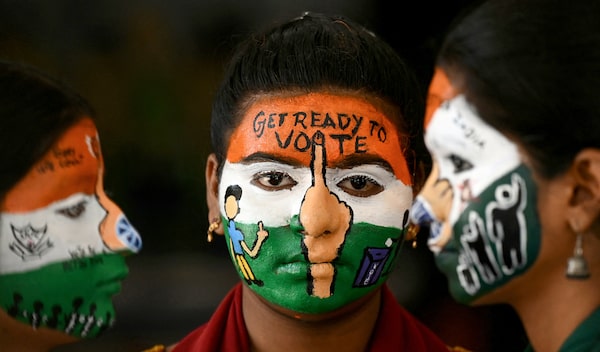
R. SATISH BABU/AFP via Getty Images
Eyes on India: More from The Globe and Mail
India-Canada relations hit a low point last fall, when the Trudeau government said Indian operatives were behind the killing of a Sikh activist in B.C. Asia correspondent James Griffiths spoke with The Decibel from New Delhi about India’s reaction. Subscribe for more episodes.
The rise of Narendra Modi, the shrewd leader shaping India in his own strongman image
India dreams of superpower status, but climate change threatens new nightmares
Indian legislature to reserve a third of seats for women amid concerns about Modi’s motives